In the realm of colors, purple and yellow sit across from each other on the color wheel, making them perfect complements. This striking combination not only enhances the aesthetic appeal of your home and garden but also invigorates your outdoor spaces. We’ve curated a collection of our top flower pairings in these lively hues to ignite your passion for gardening. From the elegant lupine paired with the sturdy yarrow, to the majestic foxglove alongside the stately delphinium, and the fragrant hyacinth with the graceful anemone, these duos are sure to inspire.
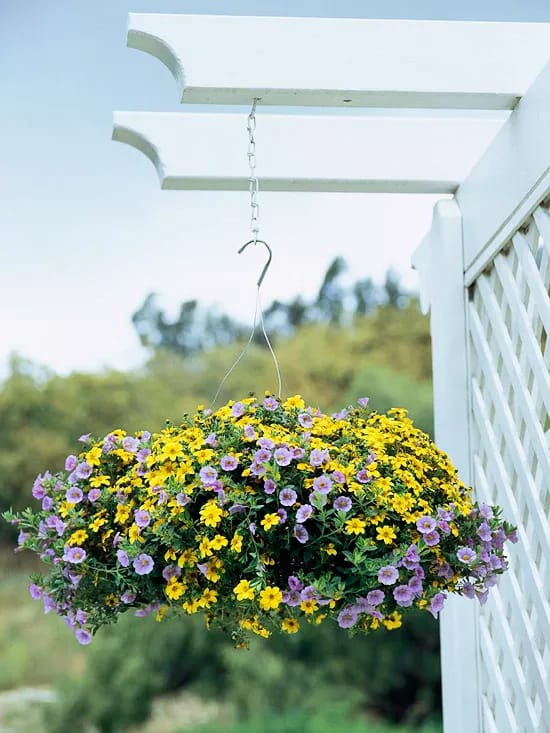
Embrace the abundance of color in your garden; the contrast of yellow capturing attention and purple holding it can transform your space. Consider the combination of Superbells Lavender calibrachoa and Bidens ferulifolia for a self-maintaining display in sunny spots, requiring minimal watering except on the warmest days.
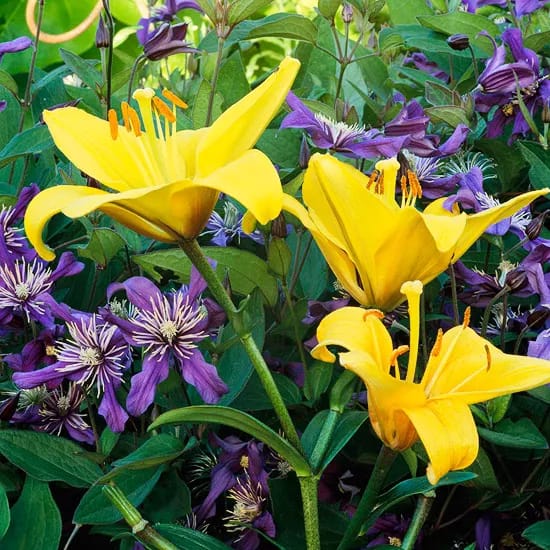
Lilies paired with clematis thrive under similar conditions, enjoying full sun while preferring their roots to remain cool and moist, ideally in rich soil that’s partially shaded in the afternoon. Notably, Oriental lilies add a touch of sweet fragrance to your garden.

Brighten your garden throughout the season with golden barberry varieties like ‘Aurea’ or Sunjoy Gold Beret, which beautifully complement ‘Carnaby’ clematis and ‘Art Deco’ iris, while offering a deterrent to wildlife with their thorny branches.
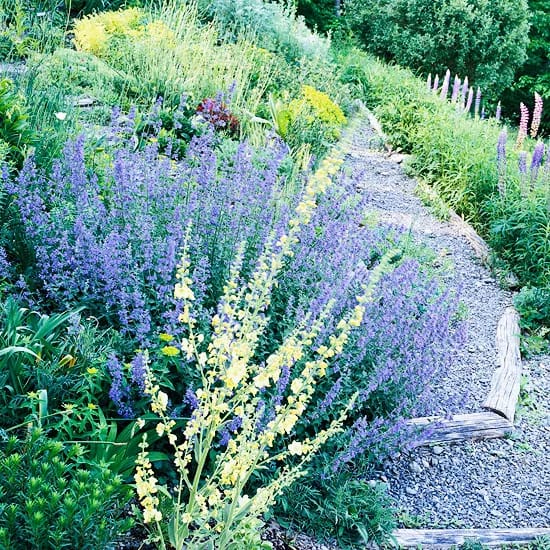
A natural-looking pathway flanked by yellow mullein, blue catmint, and a mix of purple and pink lupines can create a stunningly organic appeal, enhancing the garden’s rustic vibe while maintaining the desired color theme through careful plant selection.
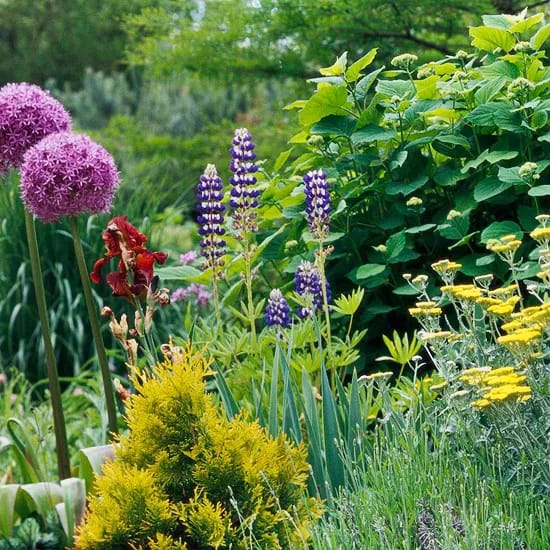
Exploring different shades and temperatures of purple and yellow, from bold to pale, can add depth to your garden. Optimal combinations might feature similar intensities or temperatures for a cohesive look.
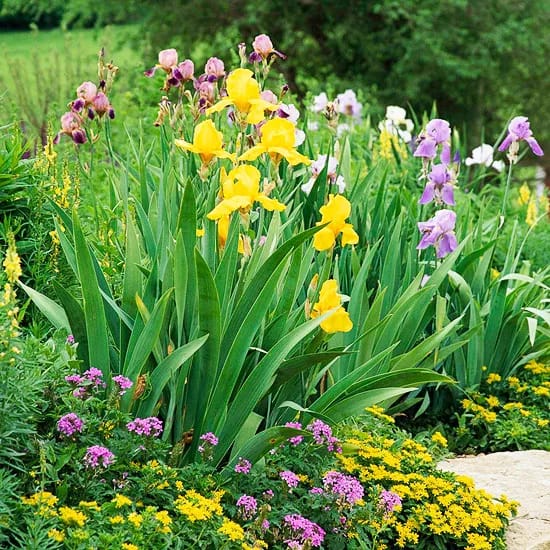
Incorporate varying heights in your garden with tall plants like irises, complemented by the lower-growing Sedum kamtschaticum and verbena, creating a layered effect that enhances the visual interest of your space.
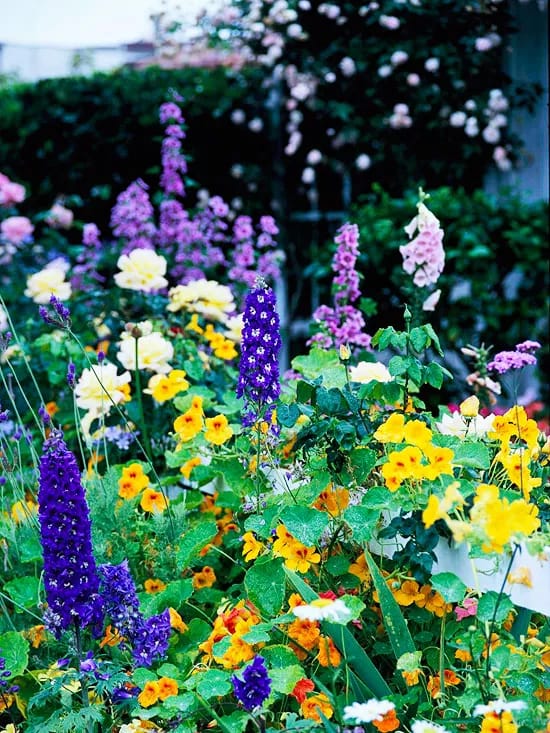
Mixing up your flowerbeds with different plant forms and heights, such as the tall spikes of foxgloves and delphiniums against the rounded shapes of yellow roses and nasturtiums, can create a dynamic and changeable garden scene.

Integrating pink into your purple and yellow theme, with plants like daylilies and roses against a backdrop of coneflowers and liatris, offers a refreshing and cool welcome, balancing warm and cool hues effectively.
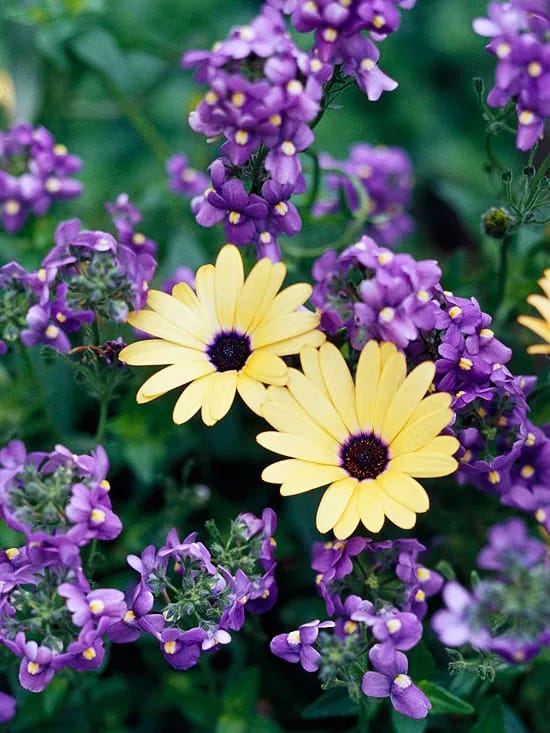
Some flowers naturally exhibit your desired color scheme within their own blossoms, like the Lemon Symphony African daisy, which can be further accentuated by companion plants like ‘Bluebird’ nemesia, especially suited for cooler climates.
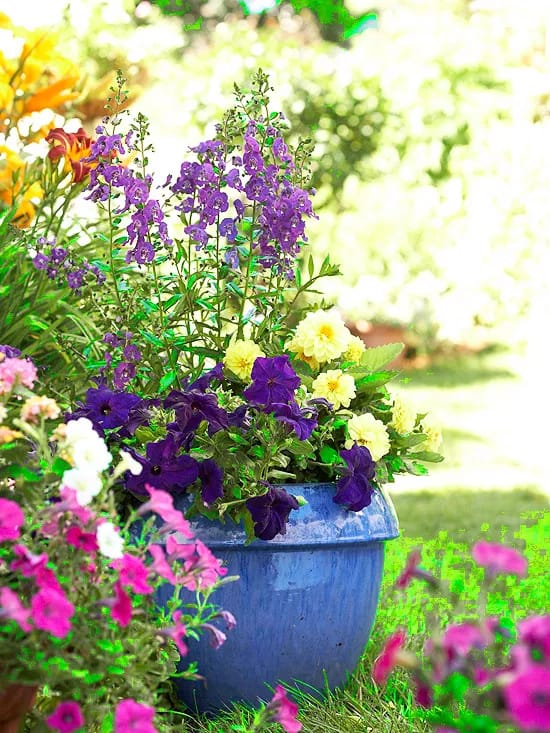
The classic garden arrangement of thrillers, fillers, and spillers can be enhanced by the thoughtful selection of container colors, with purple angelonia, yellow dahlias, and purple petunias creating a stunning display.
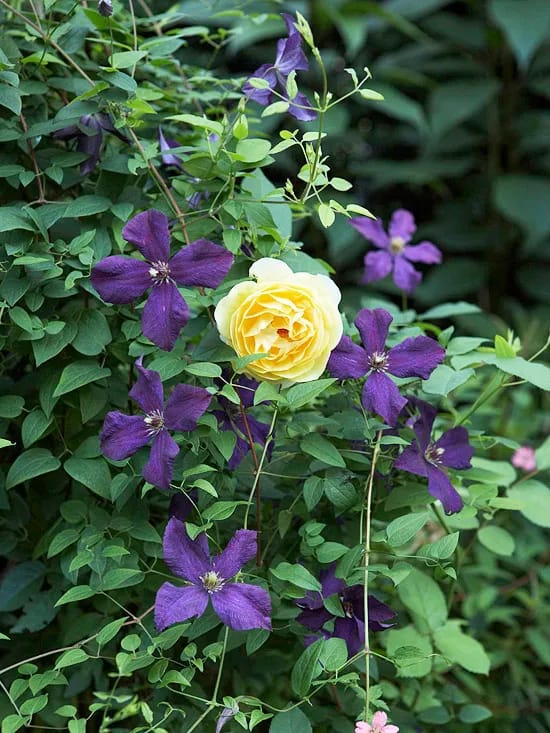
Pair roses and clematis for a natural garden duo, with varieties like ‘Polish Spirit’ or Jackman clematis offering a rich purple hue to complement golden roses, ensuring both have ample sunlight.
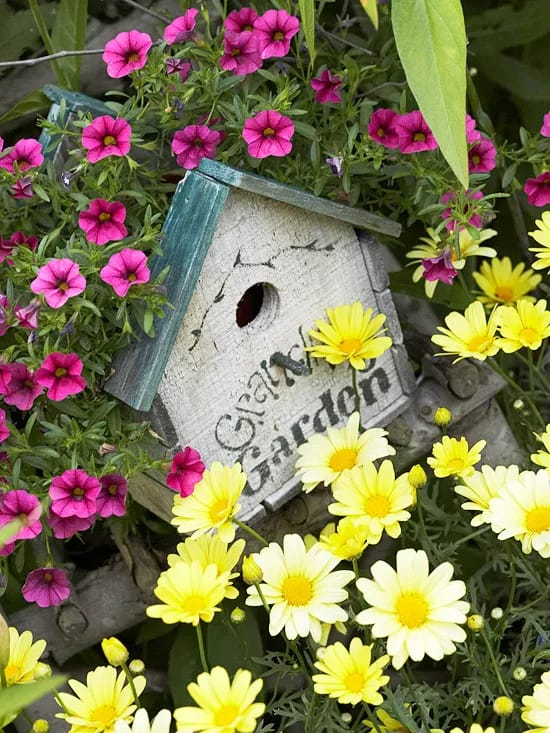
Look to calibrachoa and Marguerite daisies for striking foliage and blooms that last, with new, more heat-tolerant daisy varieties extending the display even in warmer temperatures.
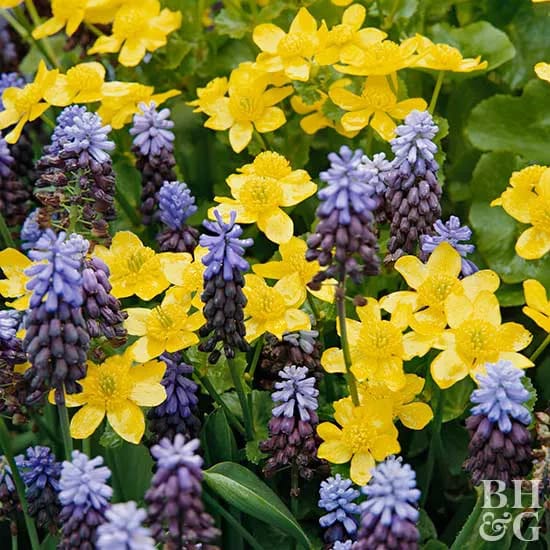
Spring gardens can burst with purple and yellow through the combination of grape hyacinths and buttercup anemones, providing a brief yet memorable show before retreating for the season.

For an easy-care garden, pair vibrant black-eyed Susans with burgundy sedum for a display that thrives in full sun, requiring minimal maintenance while peaking in beauty mid to late summer.
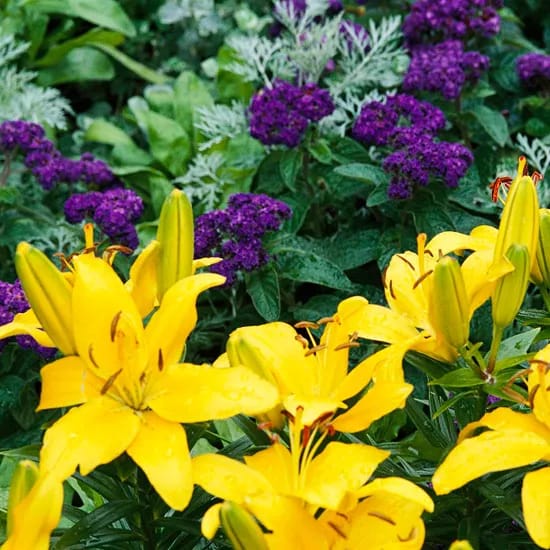
Add a touch of fragrance with heliotrope, complementing yellow Asiatic or Oriental lilies for a scented duo that thrives in sunny spots, offering a sweet or cherry pie-like aroma to your garden.
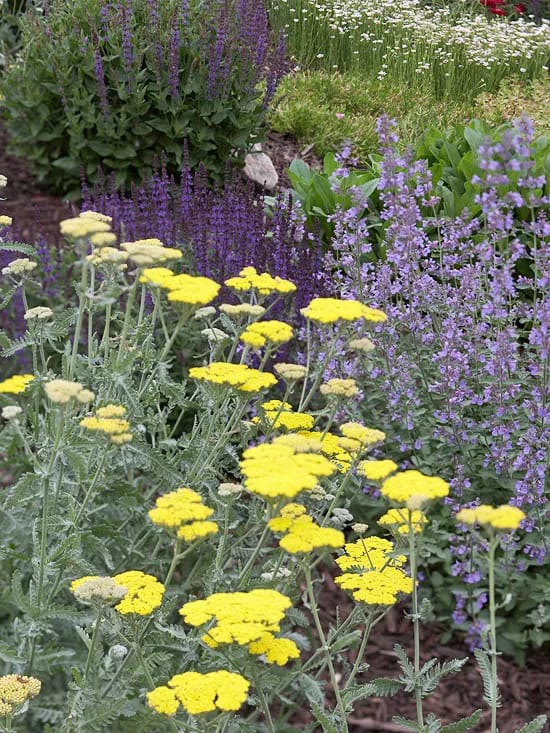
For a resilient garden display, consider the drought- and heat-tolerant combination of yellow yarrow, purple catmint, and deep-violet ‘May Night’ salvia, perfect for well-drained soils and sunny locations.





